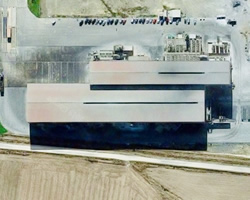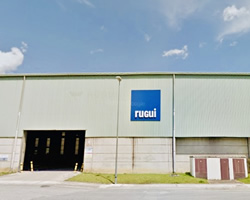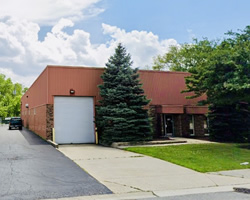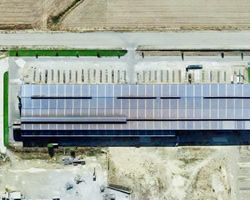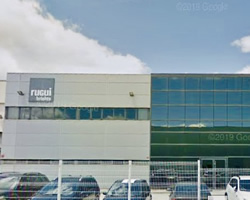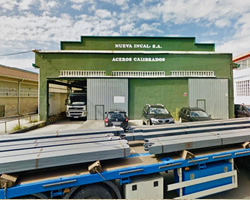Información corporativa
AYUDA PÚBLICA TEMPORAL RECIBIDA DEL FASEE
El 7 de Septiembre de 2021, el Consejo de Ministros autorizó al Consejo Gestor del Fondo de Apoyo a la Solvencia de Empresas Estratégicas (FASEE) la aprobación de la operación de respaldo público temporal solicitado por Rugui Steel, S.L y las empresas que conforman el grupo.
La ayuda concedida por FASEE, que ha sido de un total de 25,025MM de euros, se ha articulado a través de un préstamo participativo de 13,525MM y de un préstamo ordinario de 11,5MM. Estos préstamos tendrán una duración máxima hasta el 2027 y los tipos del préstamo participativo son los contemplados en el anexo del acuerdo del Consejo de Ministros de 21 de julio de 2020 y en el Marco Temporal de la Comisión Europea.
El FASEE fue aprobado por el Gobierno en julio de 2020 y contempla ambos instrumentos (préstamos participativos y préstamos ordinarios) con el objetivo de aportar apoyo público temporal para reforzar la solvencia de empresas no financieras afectadas por la pandemia de la COVID-19 que sean consideradas estratégicas para el tejido productivo nacional o regional.
Importancia GRUPO RUGUI STEEL
GRUPO RUGUI STEEL es una empresa líder en Europa en sectores nicho. Dentro del sector acero, estamos diversificados en diferentes tipologías de productos en los que nos hemos posicionado como líderes. Entre los aspectos que nos hacen únicos destacamos:
- Somos la única acería en Europa con proceso de inducción (emisión de un 23% de tons de CO2 que las que emitiría cualquier acería tradicional de arco eléctrico).
- Fabricante de relevancia de llanta con bulbo, vital para el sector naval, con un 80% de la capacidad productiva en Europa.
- Somos líderes en llanta/pletina y cuadrado laminado en Europa en el sector agrícola y de aceros de ingeniería.
- Somos líderes en fabricación y venta de llanta y cuadrado estirado en frío en Europa.
Teniendo en cuenta nuestras características, nuestros productos y nuestras diferentes ubicaciones productivas, somos un grupo de empresas que presta un servicio esencial y estratégico dentro de España
La solicitud de apoyo público temporal se enmarca dentro de la situación del mercado y de actividad de la compañía en los años precedentes, causada por el profundo impacto y persistencia de la pandemia causada por el covid-19, lo que ha generado una gran incertidumbre en los sectores en los que nos encontramos presentes.
Transparencia
La ayuda total autorizada se ejecutó en distintas entregas en diferentes momentos del tiempo:
| INSTRUMENTO |
IMPORTE
|
FECHA
|
|
Préstamo participativo 1er tramo
|
7,775 millones
|
28 de septiembre 2021
|
|
Préstamo ordinario 1er tramo
|
5,75 millones
|
28 de septiembre 2021
|
|
Préstamo participativo 2º tramo
Préstamo ordinario 2º tramo
|
5,75 millones
5,75 millones
|
28 de septiembre 2022
28 de septiembre 2022
|
El destino de los fondos recibidos es garantizar la continuidad de la actividad de la compañía (en un sentido muy amplio, incluyendo pagos a proveedores, trabajadores, atención de obligaciones bancarias…). Además, cubrirá nuestras necesidades de liquidez impulsará la transición ecológica a través de la reducción de las emisiones de CO2 y de utilización de energía no contaminante.
En la siguiente tabla, se puede observar qué peso relativo ha tenido cada partida en el total.
| CONCEPTO |
EN %
|
|
Costes derivados de la actividad operativa
|
70 %
|
|
Pagos no operativos*
|
30%
|
*Se incluyen, entre otros, reembolsos, nóminas, impuestos, seguros sociales, transición ecológica y digital, financieros, etc.
Avances realizados en el cumplimiento de los objetivos marcados en transición ecológica y digitalización GRUPO RUGUI STEEL.
GRUPO RUGUI STEEL es consciente de que la gestión medioambiental es esencial para la sostenibilidad de su negocio. Por ello, se han definido y ejecutado una serie de objetivos desde la concesión de la ayuda para minimizar el impacto medioambiental de la actividad y plasmar nuestro compromiso con la denominada “transición ecológica” y descarbonización. Las acciones llevadas a cabo en este sentido se detallan de la siguiente manera:
- Nuestra acería emite un 77% menos de emisiones de CO2 que cualquier otra acería española o europea de arco eléctrico (las tradicionales) al ser de inducción. Emitimos 13.000 tons menos de CO2 que otras acerías de similar tamaño.
- Nuestro proceso productivo (inducción frente a arco eléctrico) exige consumir materia prima (chatarra) de primera calidad, con lo que la merma obtenida es 5 o 6 veces inferior a la del proceso tradicional.
- Firmamos un PPA (Power Purchase Agreement) hasta junio de 2031 que nos garantiza que el 50% de la energía que consumamos sea “verde” (proviene de parque eólico).
- Hemos puesto una en marcha a finales de 2022 una planta fotovoltaica de 4,8MwH que supone el 10% de nuestro consumo eléctrico.
Además, promovemos la gestión ambiental sostenible a través del consumo responsable y sostenible de agua, electricidad, gas, reducción de los residuos (que posteriormente los gestionamos adecuadamente) y un uso eficiente de las materias primas en el proceso de producción.
En el caso de digitalización, se ha completado la digitalización de la documentación de la oficina técnica de nuestras plantas de Ólvega. Del mismo modo, se ha implantado un sistema de prevención de averías en las cajas de laminación mediante la instalación de sensores de vibración.


